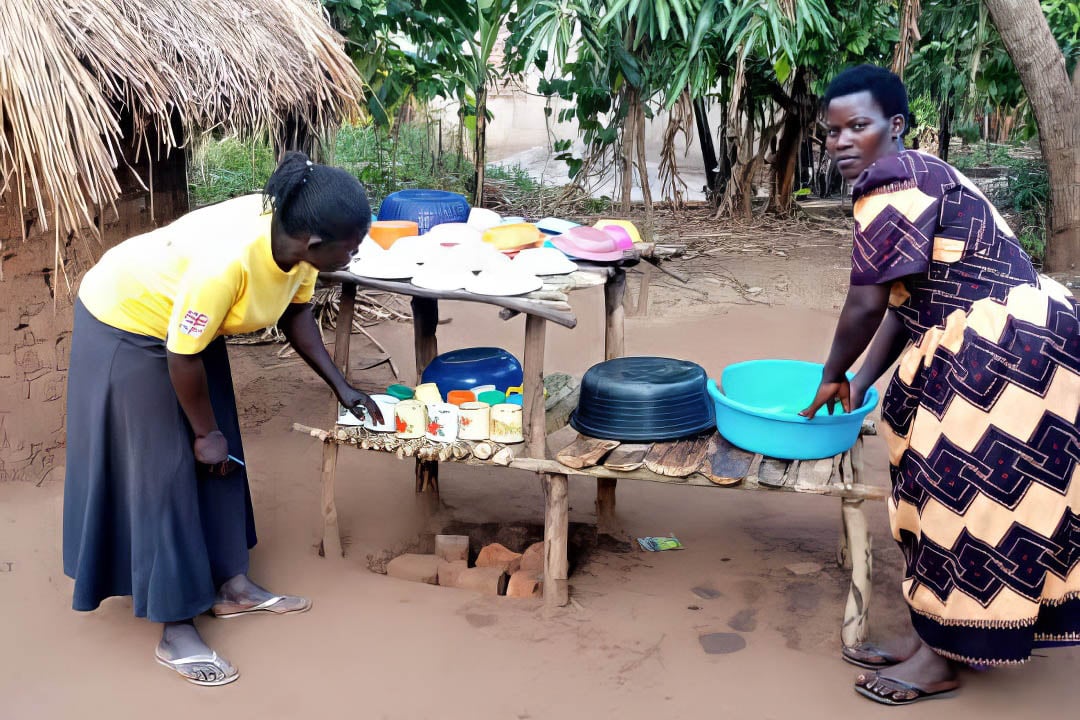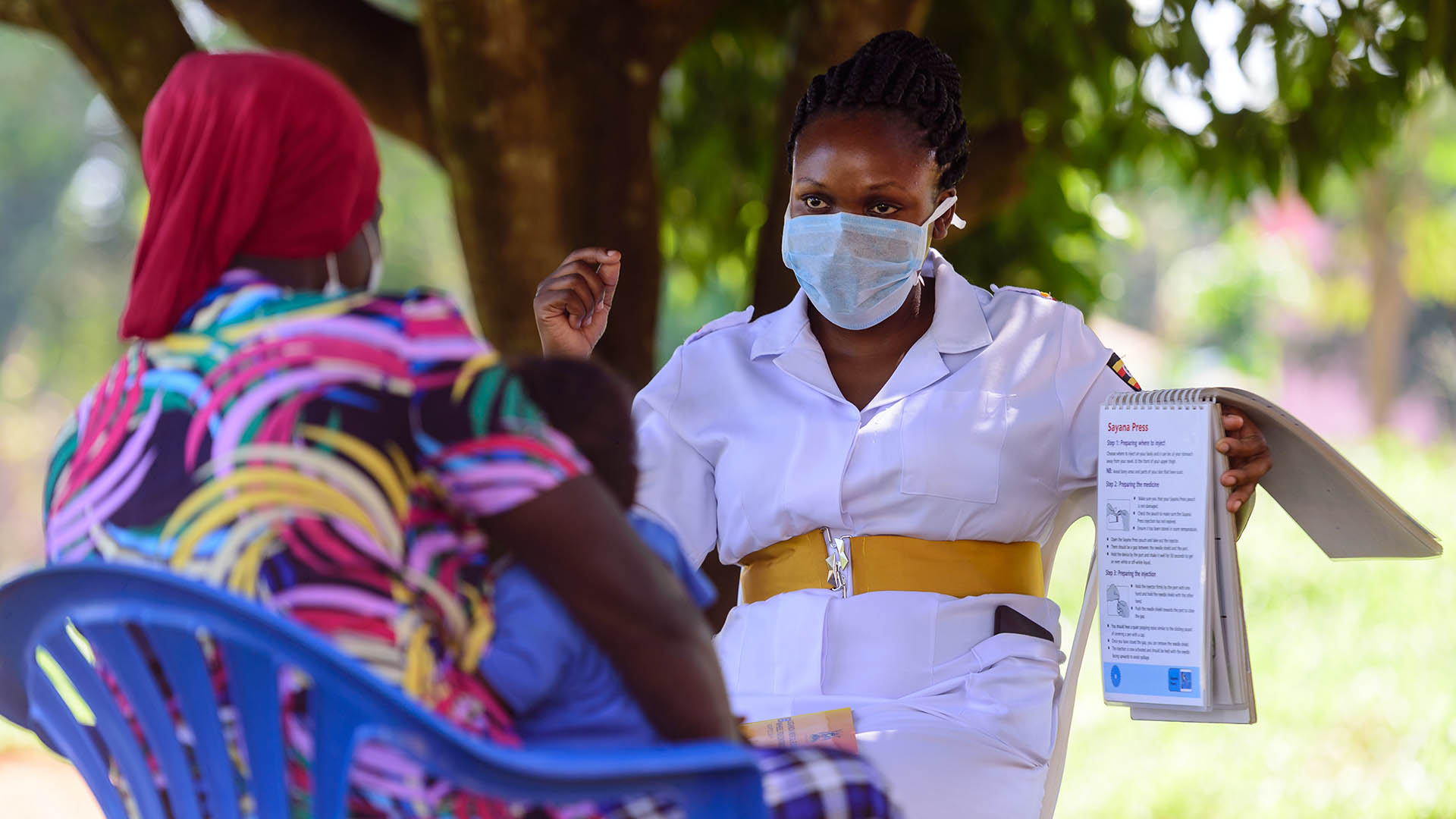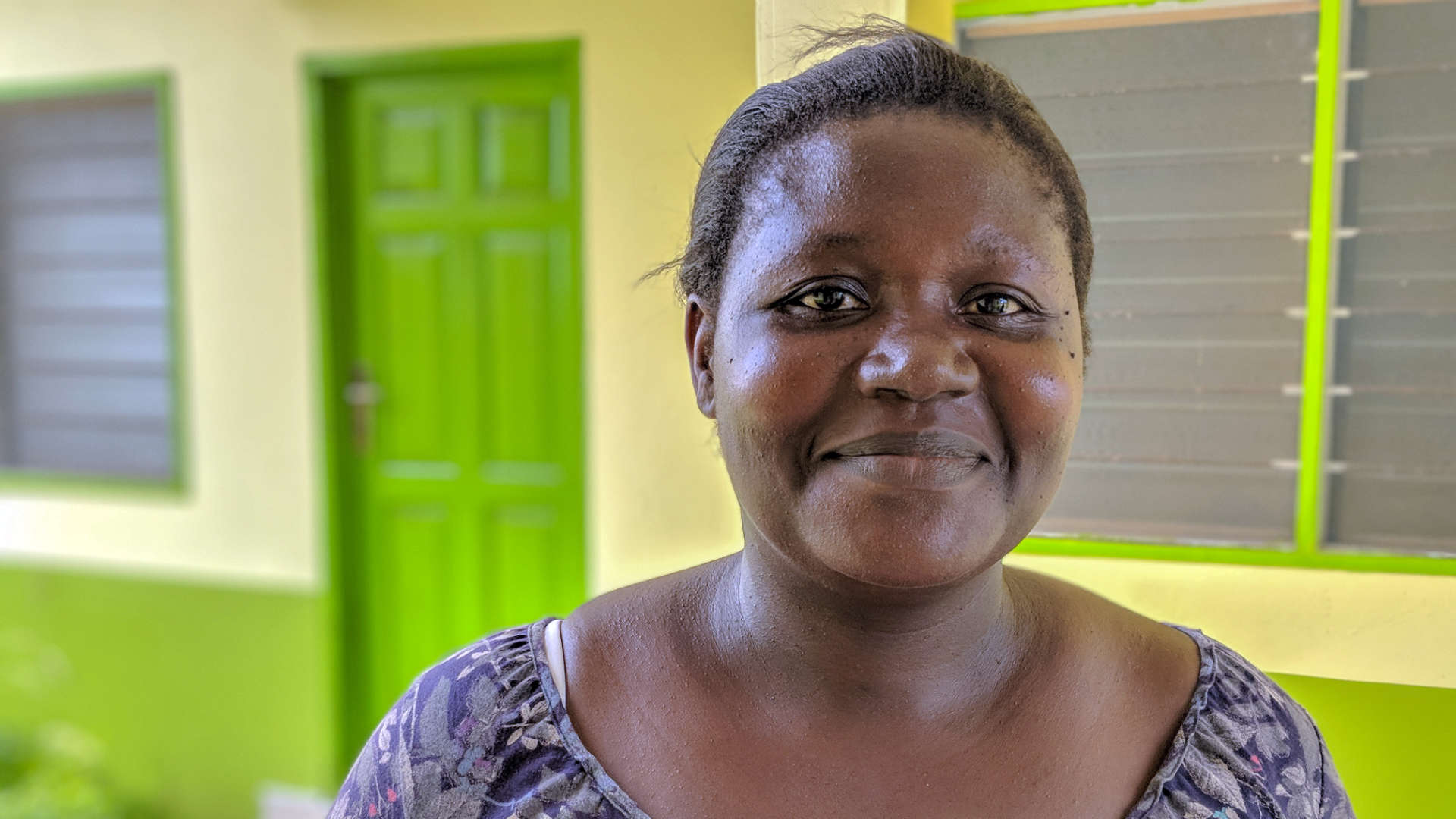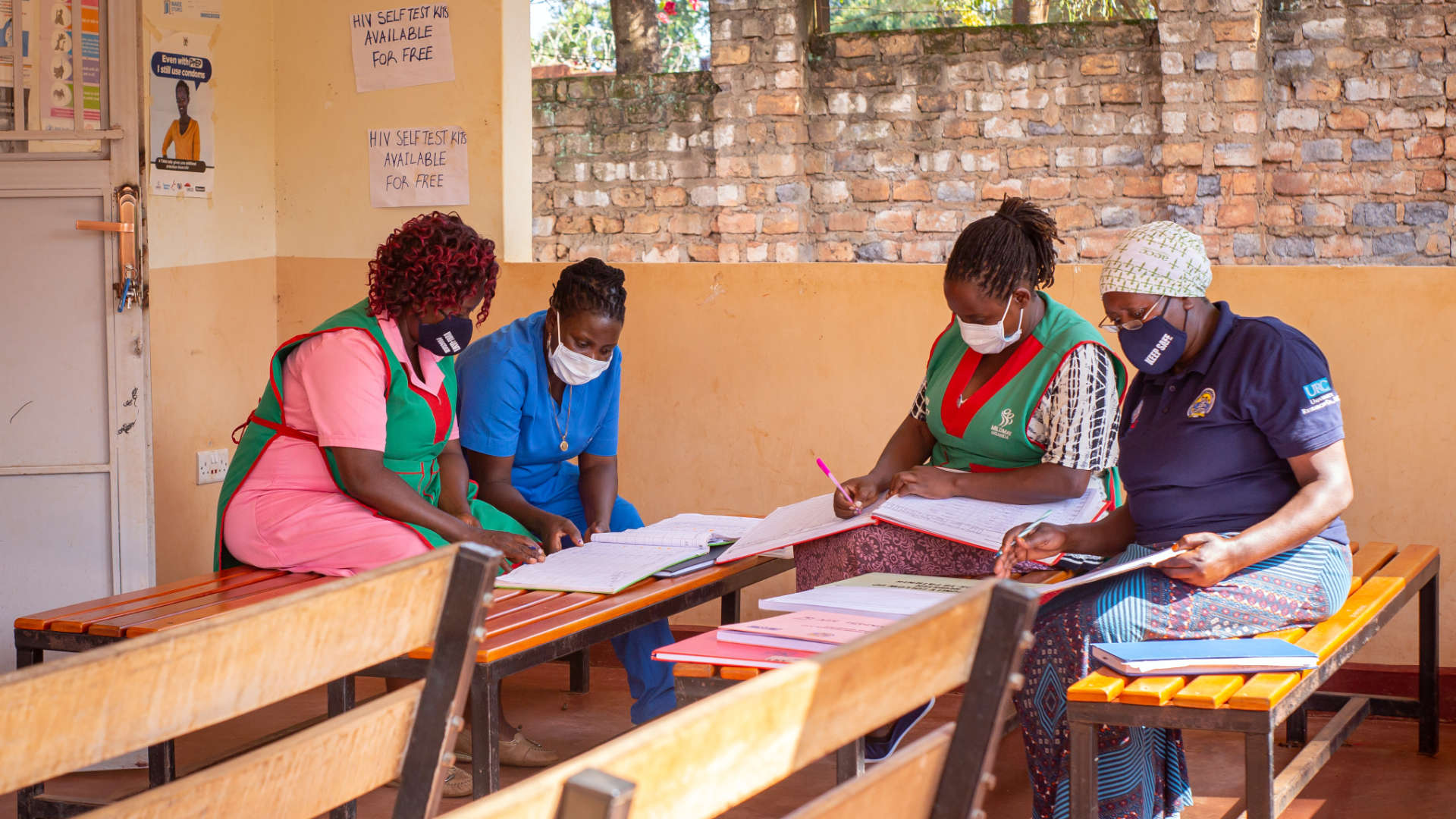Amina Nangobi, age 27, is a subsistence farmer. She lives in the village of Kituuto, in the Luuka District of East Central Uganda. Just a year ago, poor hygiene practices and living conditions were the norm in her village.
Amina’s household latrine was dilapidated, and her family of ten had resorted to open defecation in the bushy cassava crop gardens near their two huts. Water scarcity also contributed to their limited hand washing practices, and Amina did not boil the family’s drinking water. As a consequence, Amina and her family suffered from recurrent episodes of diarrhea.
Diarrheal disease can have severe consequences – particularly for children – including death due to dehydration. Poor hygiene practices contribute to these diseases and their spread.
Key performance indicators related to childhood diarrheal disease tracked through Uganda’s national health management information system, DHIS2, showed that community water, sanitation, and hygiene (WASH) practices were suboptimal in Luuka District. As an example, only 63.9% of latrines were clean and safely covered in November 2021.
Interventions to Improve Community Hygiene
To address the poor WASH practices in Luuka District, the URC-led USAID Regional Health Integration to Enhance Services – East Central Uganda (RHITES-EC) team – together with district leadership – decided to implement a social and behavior change campaign. In partnership with Uganda’s Ministry of Health, district health teams, and local leaders, RHITES-EC carried out community-based home improvement campaigns to improve hygiene practices.
District health workers supported these efforts by creating awareness and empowering community members with knowledge and skills to use local resources to practice basic hygiene standards. Community members have gone on to build tippy tap hand washing stations and construct drying racks to separate household utensils from dirty water and allow them to dry in the sun.
“As members of Village Health Teams (VHT), we were mobilized and trained on good hygiene,” said Sarah Kawala, a Village Health Team member in Kituuto. “Then we mobilized our communities and conducted awareness raising sessions and engaged them in interactive discussions.”
The hygiene practices promoted at the household level included:
- Rain harvesting for improved access to water;
- Constructing pit latrines with a wall, roof, door, and pit cover, to mitigate open defecation, and ensuring the latrines are kept hygienic;
- Setting up outdoor drying racks for kitchenware/utensils to dry under the sun to kill germs;
- Setting up hand washing facilities;
- Boiling drinking water and keeping it covered;
- Digging trash pits to properly dispose of refuse; and
- Keeping homesteads clear of debris and bushes.
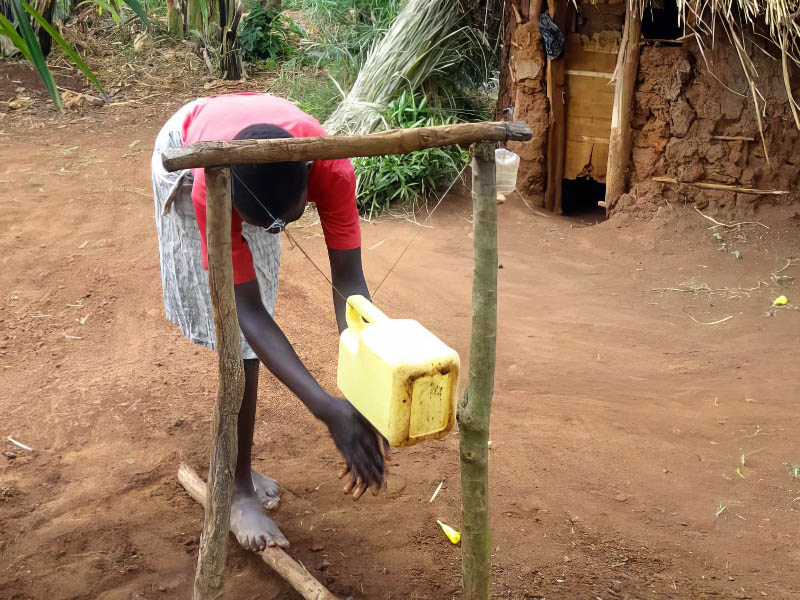
Hygiene Campaigns Lead to Better Health
Sarah, a Village Health Team member who has participated in home improvement campaigns in Kituuto, described the improvements she observed. “Many homes in Kituuto village actually look good and organized. We do not have many people suffering from diarrhea like we used to,” Sarah said. “I’m grateful to our health workers for teaching my community how to practice good hygiene so that we can have better health.”
Luuka District’s diarrheal disease burden dropped as per data reported to DHIS2, from 1,202 cases in December 2020 to 435 cases in November 2022.
The home improvement campaigns in East Central Uganda contributed to improvements including:
- Increasing the reported practice of hand washing in the village of Kituuto from 61% in 2016 to 81% in 2021. Village Heath Teams were supported and supervised by health workers in their catchment area to collect community level WASH indicators.
- Reporting on community indicators – such as safe latrine coverage and hand washing facilities – in the national health management information system improved from 28% in 2016 to a record high of 82% in 2021, enabling district leadership to more readily identify communities needing additional support.
